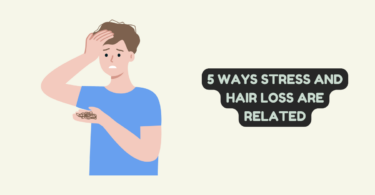
Asthma is a respiratory disease that continues to increase in our environment and that usually grows in parallel with industrialization.
Asthma cannot be cured with medications, although it is possible to control it and enjoy a good quality
Asthma cannot be cured with medications, although it is possible to control it and enjoy a good quality of life. Children with asthma may qualify for chiropractic treatment. Many parents are hesitant to take their children to a chiropractor, but there are many benefits to going to a family chiropractic office. Chiropractic care can help manage your child’s symptoms and possibly allow them to reduce their medication.
Chiropractors focus on spinal manipulation in order to alleviate pain and other medical conditions. In the case of asthma, a chiropractor will work on the upper spine area, which is where nerves from the lungs and respiratory system originate. The goal is to remove any nerve interference that may be caused by vertebral subluxations (misalignments). This interference can make it difficult for the lungs to receive signals from the brain.
However, when the disease manifests itself in childhood, it often disappears on its own with age.
In any case, adequate medication and control of the factors that trigger the attacks are essential.
Asthma epidemiology
The incidence of asthma continues to rise. It affects more than 6% of the European population, and in the case of children, almost 1 in 10 suffers from this respiratory problem.
In USA, estimates speak of a prevalence of 5% of the population.
In this sense, the increase in the disease that has been registered for years has been influenced by improvements in diagnosis. However, increased sensitivity to environmental allergens also appears to play a role.
Causes of asthma
Asthma is the result of a combination of hereditary and environmental factors. Thus, asthmatic parents are likely to have a child with the disease, although this genetic predisposition is not enough to develop it. However, if there is a special sensitivity to a certain irritant, drug, or allergen (dust mites, pollen, fungi, animal particles), asthma will appear.
Risk factors for asthma
Certain factors have been linked to an increased chance of developing asthma. Among them, the deficiency in the diet of omega 3 fatty acids and vitamins C and E. also stands out. Obesity is also positively related to the disease.
On the other hand, a widespread hypothesis that has not been confirmed is that excessive hygiene in children could make them more vulnerable to allergic diseases, including asthma.
Finally, tobacco and pollution may not be the trigger for the disease, although they are among the factors that affect crises.
Asthma: changes in the airways
In asthma attacks, air enters and leaves the lungs with difficulty. For this to happen, changes take place that does not always occur at the same time or have the same duration. On the one hand, inflammation of the internal mucosa of the airways occurs. On the other hand, the so-called bronchospasm occurs, in which the muscles of the ducts through which the air circulates contract. Finally, excess mucus can make air circulation even more difficult.
Asthma symptoms
The most common symptoms of asthma are:
Shortness of breath (can cause anxiety).
Whistling or whistling during breathing.
In the case of asthma, they usually manifest intermittently in the form of attacks or attacks that can last from a few minutes to several days, in which case hospitalization is necessary.
Diagnosis of asthma
In case of suspected asthma, the doctor can perform a series of tests to confirm it. Spirometry measures the amount of air that moves in and out of the lungs. To confirm an allergic origin, skin tests can be performed to determine possible causes.
Asthma treatment
It is also important to establish a protocol for action when suffering a crisis and learn relaxation and breathing techniques, etc.
Once the disease is diagnosed, it is very important to establish the mechanisms to control the seizures or attacks. To do this, it is important to identify the factors that can trigger an asthma attack and to know how to avoid them.
Asthma medications
Asthma medications can be swallowed, injected, or inhaled. Inhaled asthma medications are the most widely used due to their speed of action. They are also the ones with the fewest side effects, as the dose can be adjusted better since the active ingredient passes directly into the bronchi.
Treatment can combine:
Drugs for specific attacks, which are usually bronchodilators that open the airways. The most widely used are beta-agonist drugs.
Medicines to control the disease. The most common are corticosteroids. From time to time, the doctor will assess the state of the patient to regulate the medication.
On the other hand, cases of allergy to an identified agent can be treated with periodic vaccinations. If after 2 years no positive results are obtained, the treatment is discontinued. In any case, children tend to respond better to vaccines than adults.
Asthma inhalers
The most common way to take asthma medication is in an inhaled form. In this sense, there are several types of inhalers, although they all have in common that they release the drug in the form of fine particles. Learning to use the device well is essential to properly medicate. The most common devices are:
Pressurized inhalers. They have been in use for decades. A pressurized gas allows the drug to be released each time the top of the aerosol is pressed. They are comfortable to wear, although children and the elderly have a hard time learning how to use them.
Dry powder devices. There are different devices in which a capsule is placed with the powdered medicine that is released when the device is activated. You have to breathe in deeply, so it can be uncomfortable during an attack.
Nebulizers. The dissolved drug becomes a fine mist, by mechanical action, and can be aspirated through a mask. It is ideal for young children.
Control of asthmatic attacks
For asthma treatment to be effective, it is necessary to know and try to avoid the factors that trigger attacks. These are some of the most common:
Pollen. On the days of greatest incidence, you have to keep the windows closed and avoid leaving the house. At home, it is advisable to limit the number of indoor plants.
Dust mites are tiny arachnids that feed on skin scales. They live on mattresses, pillows, sofas, blankets, and stuffed animals. To eliminate them, it is preferable to use a vacuum cleaner to sweep and avoid carpets, rugs, and curtains.






